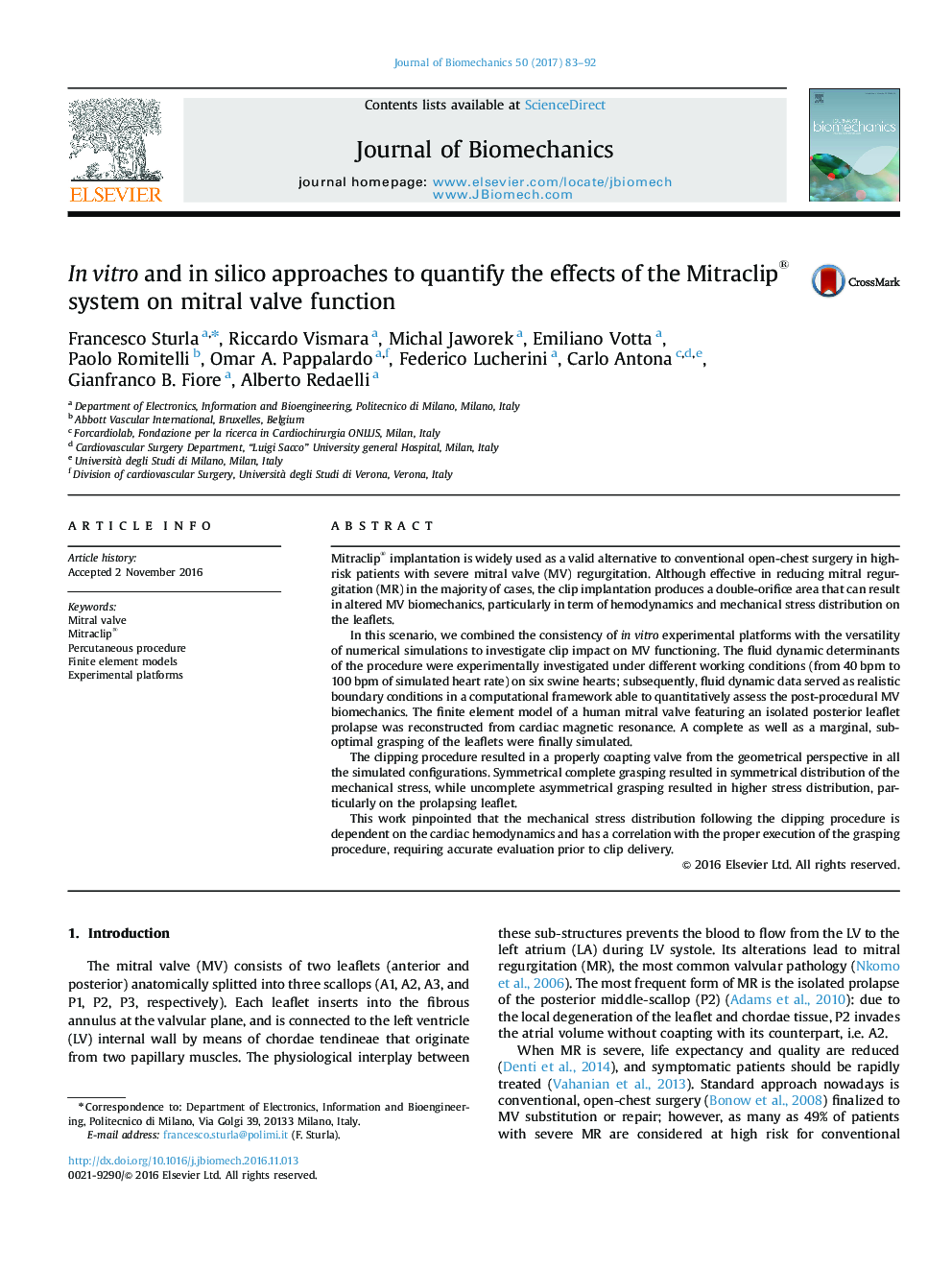| Article ID | Journal | Published Year | Pages | File Type |
|---|---|---|---|---|
| 5032134 | Journal of Biomechanics | 2017 | 10 Pages |
Mitraclip® implantation is widely used as a valid alternative to conventional open-chest surgery in high-risk patients with severe mitral valve (MV) regurgitation. Although effective in reducing mitral regurgitation (MR) in the majority of cases, the clip implantation produces a double-orifice area that can result in altered MV biomechanics, particularly in term of hemodynamics and mechanical stress distribution on the leaflets.In this scenario, we combined the consistency of in vitro experimental platforms with the versatility of numerical simulations to investigate clip impact on MV functioning. The fluid dynamic determinants of the procedure were experimentally investigated under different working conditions (from 40Â bpm to 100Â bpm of simulated heart rate) on six swine hearts; subsequently, fluid dynamic data served as realistic boundary conditions in a computational framework able to quantitatively assess the post-procedural MV biomechanics. The finite element model of a human mitral valve featuring an isolated posterior leaflet prolapse was reconstructed from cardiac magnetic resonance. A complete as well as a marginal, sub-optimal grasping of the leaflets were finally simulated.The clipping procedure resulted in a properly coapting valve from the geometrical perspective in all the simulated configurations. Symmetrical complete grasping resulted in symmetrical distribution of the mechanical stress, while uncomplete asymmetrical grasping resulted in higher stress distribution, particularly on the prolapsing leaflet.This work pinpointed that the mechanical stress distribution following the clipping procedure is dependent on the cardiac hemodynamics and has a correlation with the proper execution of the grasping procedure, requiring accurate evaluation prior to clip delivery.
